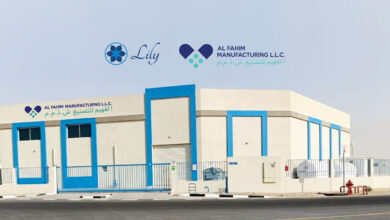Rediroom – Instant patient isolation
The importance of isolation
Effective isolation is an essential part of infection prevention. A host of pathogens can spread via direct contact (typically through contaminated hands) or indirect contact (involving contaminated surfaces). Respiratory droplets are traditionally thought to spread up to a two-metre radius when colonised patients cough, sneeze or talk. Without proper infection prevention measures, those infections can quickly spread through a hospital.
Guidelines and public health bodies worldwide recommend isolating patients in various circumstances. Keeping patients physically separated helps interrupt the chain of transmission, and, in cases of droplet spread, air filtration can help reduce the spread of contamination. Isolation is a common occurrence within hospitals, with patients need isolating in the event of unexplained vomiting or diarrhoea or infection with MRSA, multi-resistant Gram-negative bacteria, viral gastroenteritis, and more.
Unfortunately, there’s a worldwide shortage of isolation spaces in healthcare. Whilst the COVID-19 pandemic brought the shortage of isolation facilities into sharp focus, that shortage has existed for a long time. It will continue to pose a risk for safe patient care in the future.
Rediroom is the world’s first mobile isolation room. It can be erected by one person in under 5 minutes and is suitable for the two most common types of isolation – droplet and contact precautions. Where healthcare providers once struggled to find isolation spaces for their patients, Rediroom brings isolation to them.

Smart, collaborative design
The result of an 8-year collaboration between clinicians, infection prevention experts and industrial designers, Rediroom combines an array of features intended to lower the risk of infection for patients and healthcare professionals. Rediroom filters infectious air before it’s returned to the open ward. Because certain infections (including viral pathogens) can spread through respiratory droplets, Rediroom utilises our HEPA & carbon air filtration system that filters 99.995% of particles down to 0.3 micrometres (µm). That’s small enough to trap individual bacteria, fungal spores and respiratory droplets and filters more than an N95 respirator.
To help stop the spread through direct contact, Rediroom features hands-free door opening for entry and exit. Strategically positioned above the entry kick panel is an integrated PPE station, reminding staff to comply with the precautions and ensuring they have all the protective equipment they need immediately to hand. Once erected, the Rediroom unit is spacious enough to allow easy patient care, similar to working in an open ward. At the same time, the Rediroom is small enough to occupy a single bed space – allowing you to increase your isolation capacity without reducing the number of beds available.
Increasing isolation capacity
The traditional way to increase isolation capacity has been to erect new buildings or to convert existing wards. Erecting new buildings is often impractical or cost-prohibitive, leading hospitals to consider converting existing open wards. Unfortunately, converting existing wards comes with its own challenges: overseeing construction and dust management within a working hospital presents a host of obstacles. To make space for individual isolation rooms, the overall number of bed spaces are often reduced, lowering hospital capacity.
Rediroom allows hospitals to increase their number of isolation spaces without reducing their overall number of available beds. Healthcare organisations introducing Rediroom increased their isolation capacity by an average of 5% – with one hospital increasing their isolation capacity by 12%.

















